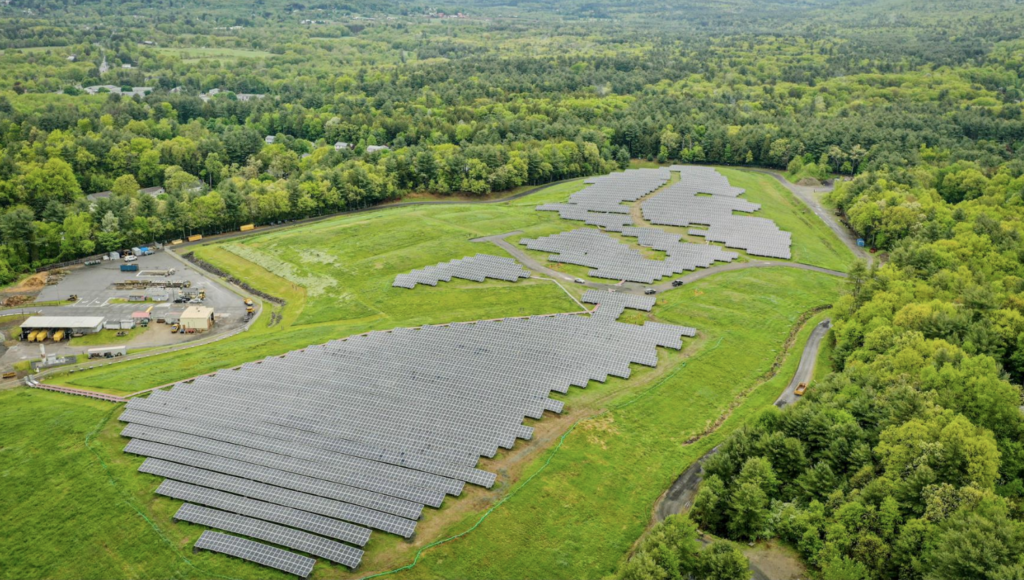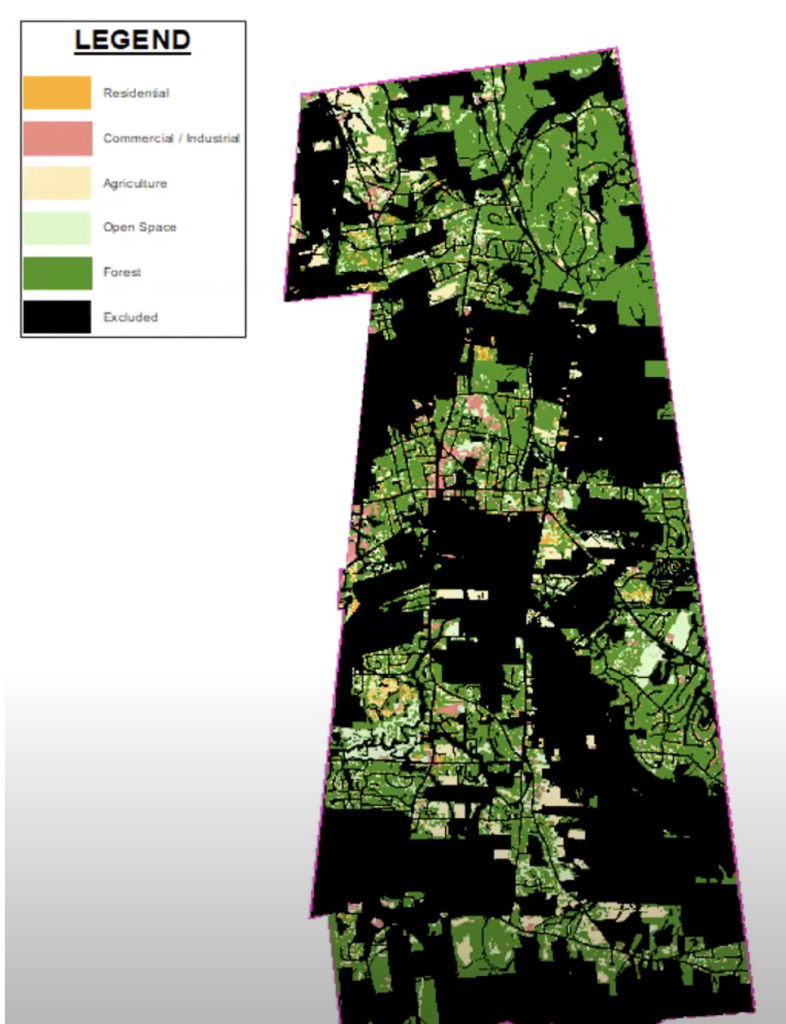GZA Study: One Third Of Land In Amherst Can Support Solar Development

Solar field on the Amherst landfill. Photo: amherstma.gov
Report On A Presentation By GZA Consultants, March 13, 2023
Representatives from GeoEnvironmental (GZA), the consultants hired by the town to perform a solar siting survey to determine the most appropriate locations for solar installations, gave an initial presentation on their work on Zoom on March 13. The recording for the presentation can be viewed here.
The GZA team consists of Project manager Adrienne Dunk, Stephen Lecco, and Jacquelyn Claver. The first phase of the study used GIS (geographic information system) data to determine locations suitable for solar energy, where solar may be feasible and/or relatively easy to build. The second stage, in which the company is currently engaged, is community engagement to understand and document opinions and values about where Amherst residents would like to see solar development in town. In the final stage, GZA will compile a report of its findings.
Dunk reviewed the targets for reduction of greenhouse gasses set by both the state and the town. Massachusetts aims for a reduction of greenhouse gas emissions of 50% below 1990 levels by 2030 and net zero by 2050. The net zero figure consists of an 85% reduction in emissions and 15% increase in carbon sequestration. The climate plan passed by the Town Council in 2019 sets a goal of a 25% reduction in emissions below 2016 levels by 2025, 50% by 2030, and 100% by 2050. Amherst’s Climate Action and Resiliency Plan (CAARP) developed by the Energy and Climate Action Committee (ECAC) and passed by the Town Council in 2021 involves a balance in reduction in emissions and removal of carbon to achieve a net zero level of carbon use.
Using the GIS data, GZA developed a map of where solar could be sited in Amherst. The map excludes land belonging to UMass, Amherst College, and Hampshire College, because those institutions have their own plans for meeting their climate goals. The map also excludes wetlands and streams, as well as land under conservation restriction, such as state forests and land preserved for agriculture. Logistically challenging areas, such as those owned by utilities and railroad tracks were also removed. The result leaves about one-third of the land in town that could support solar—ground mounted, canopy or rooftop.

These areas will be rated on a 0 to 10 scale as to their feasibility, taking into account the slope of the land, the orientation, proximity to a grid connection, and how much more power the grid can accept. Of the possible areas for solar, 86% are unbuilt. Dunk stressed that, although the map GZA created may indicate that an area is feasible for solar, the town must do a careful study to evaluate each potential site for its suitability.
To gather the opinions of Amherst residents, GZA is conducting outreach until the end of March. There is an online survey that has already received over 100 responses. In addition, the Engage Amherst site has a description of the project and a place to make comments or ask questions. There are also two interactive workshops scheduled in the Woodbury Room at the Jones Library on Saturday, March 18 from 12 to 2 p.m. and Thursday, March 23 from 6 to 8 p.m. These workshops are self-paced, and responses will be anonymous. There will be activities for children and light refreshments. Translation services will also be provided. Those interested in the development of solar energy production in Amherst are encouraged to attend the virtual meetings of the ECAC which meets every other Wednesday and the Solar Bylaw Working Group which meets every other Friday. GZA will issue its final report in April or May. To contact GZA directly, go to the website for the Amherst project or the following link: https://www.GZA.com/amherst-massachusetts-town-wide-solar-assessment.

Developing the remaining forests and meadows with solar projects will compromise the “protected” (wetland and APR) areas in the same way as building any other structures (buildings, roads, playing fields, parking…), to the ultimate detriment to habitat.
Shouldn’t the first focus for solar development be on rooftops, over parking lots and in other “brownfield” sites?